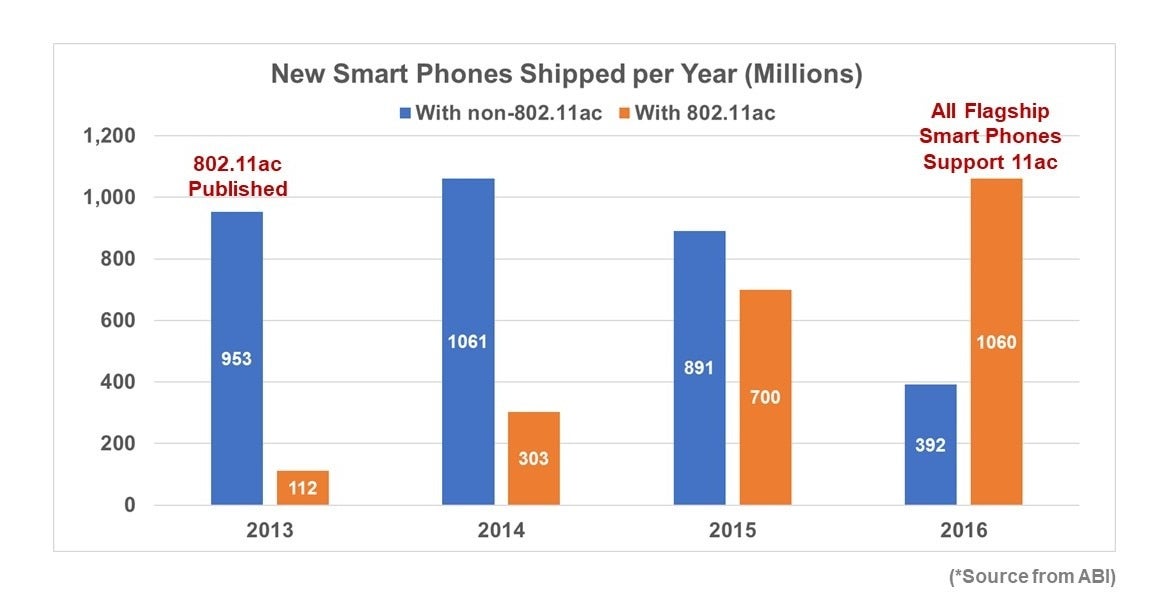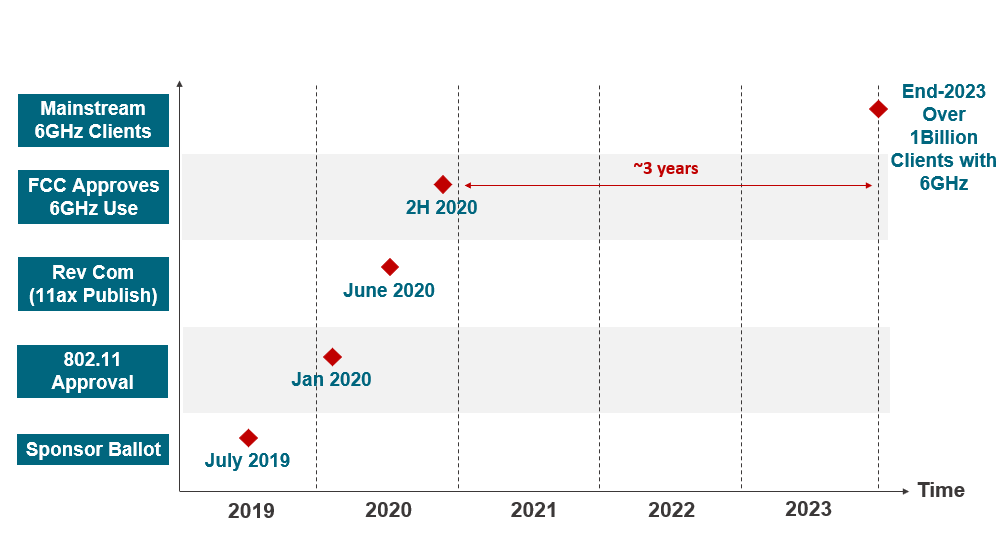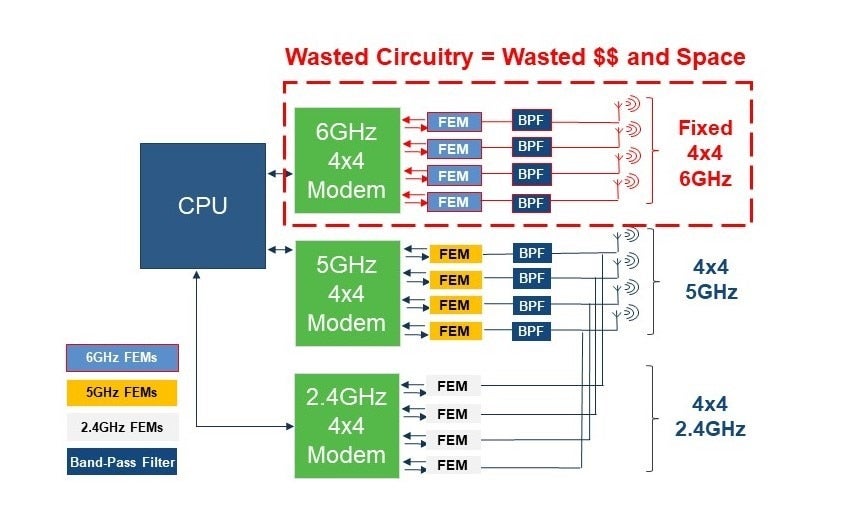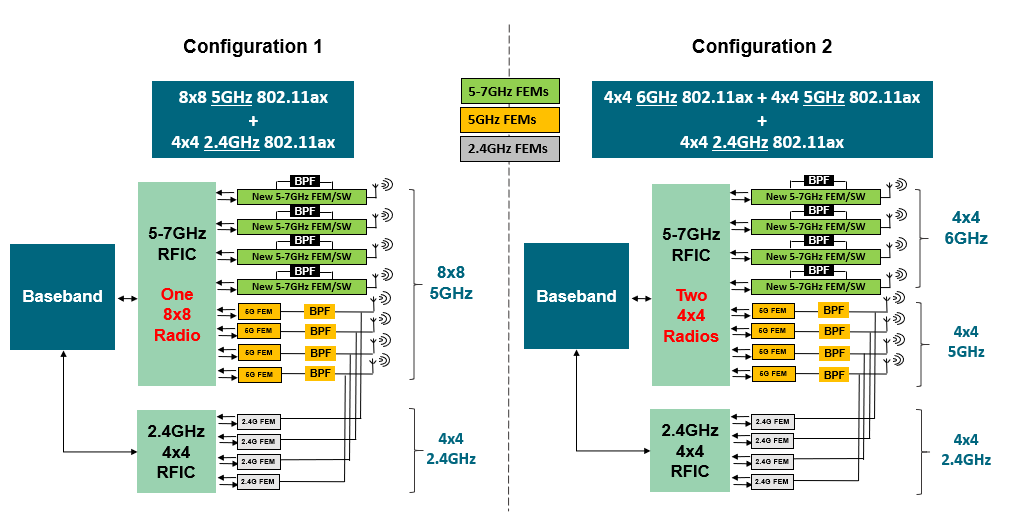In 2018 the Federal Communications Commission (FCC) of the United States issued a Notice of Proposed Rulemaking (NPRM) that opens up a maximum of 1.2GHz of spectrum between 5.925GHz to 7.125GHz for unlicensed use. The newly released spectrum has the potential to offer over twice the spectrum currently allowed in 2.4GHz and 5GHz. The additional channels allow for not only high speeds such as 10Gbps, but also support more users in dense environments such as Multi-Dwelling Units (MDUs). It is obvious that 6GHz has the potential to usher in a new era for Wi-Fi computing. The FCC’s publication of the NPRM puts it on course for eventual legalization, by most accounts, towards the end of 2020. Other countries, such as those in the European Union and in Asia, will follow suit with their own adoption of 6GHz, most likely in 2022.
While there is little doubt that the introduction of 6GHz is a great development, the mechanics of its adoption into everyday devices that we all have and love are a bit more complex. We can look at the adoption of Wi-Fi 5 (802.11ac) technology as a good model of what will most likely happen. The official 802.11ac specification was published by IEEE in December 2013. By the end of 2016, all smartphones fully adopted 802.11ac. In 2016, there were over 1.4 billion new mobile phones shipped with the majority (over 1 billion) being 802.11ac (Figure 1). If we apply this model for Wi-Fi 6 (802.11ax) 6GHz client devices, it will also likely be approximately 3 years from when IEEE publishes the 802.11ax specifications (June 2020) to when there will be over 1 billion new Wi-Fi 6 client devices, which will be middle of 2023. However, with the addition of 6GHz regulatory approval by the end of 2020, this timeline will most likely be slightly extended to the end of 2023, three years after the FCC fully legalizes 6GHz operation by end of 2020 (Figure 2).
Figure 1. Wi-Fi 5 (802.11ac) Adoption by Client Devices
Figure 2. Overall Timeline for Wi-Fi 6 and 6GHz Adoption
With the introduction of 6GHz, it may be deceptively simple to assume that next-generation Wi-Fi 6 infrastructure devices such as home gateways and access points launching in 2020 will all be designed with a fixed architecture, one that dedicates a fixed 4x4 radio to each of the 3 bands: 2.4GHz, 5GHz and 6GHz (Figure 3). As previously stated, since there will be a small quantity of 6GHz Wi-Fi 6 clients until the end of 2023, a gateway solution that devotes any dedicated 6GHz circuitry will be mostly unused for a significant portion of the time. That means the cost and space associated with these new 6GHz components will essentially be wasted inside the gateway. However, service providers must produce and deploy forward-looking gateways as their replacement cycles tend to be longer than that of client devices. These two competing dynamics present an interesting challenge for service providers who are considering the inclusion of Wi-Fi 6 with 6GHz support in their roadmaps.
Figure 3. Fixed, Triple Frequency 4x4 Design
A potential solution can be found in a technology called Adaptive MIMO (multiple input, multiple output). Adaptive MIMO was first introduced by Quantenna, now a part of ON Semiconductor, in June 2018 as a way for infrastructure devices to be dynamic and change their 5GHz MIMO configuration between one 8x8 radio and two 4x4 radios depending on the end user’s home environment, such as number of client devices, amount of interference from neighbors and other factors. However, this technology can be an even more powerful solution as it can address the complex issue of 6GHz market adoption for Wi-Fi 6 gateways. Adaptive 6GHz MIMO means that one hardware design can adapt itself between one 8x8 5GHz plus one 4x4 2.4GHz radios (Configuration 1) and three 4x4 radios, each operating at 6GHz, 5GHz and 2.4GHz (Configuration 2). When this design is first deployed, the device infrastructure will reflect Configuration 1. By the end of 2023 with the market adoption of Wi-Fi 6 6GHz, the infrastructure device will operate in Configuration 2. This configuration can be controlled using intelligent analytics which determines the prevalence of 6GHz Wi-Fi 6 clients in a network. It is important to note that Adaptive MIMO design incorporates a new, unique, loss-less 5-7GHz FEM (Front End Module).
Figure 4. Adaptive 8x8 Design
The introduction of 6GHz is expected to bring about new performance and usability for Wi-Fi 6 devices. While it offers remarkable improvements in upcoming Wi-Fi 6 networks, it also has the ability to dramatically transform the wireless landscape. The next Wi-Fi standard, IEEE 802.11be, is set to establish 320MHz channel operation in the 6GHz band using up to 16x16 MIMO configuration on infrastructure devices. The combination of these developments can increase speed to over 40Gbps, offer previously unseen range performance, and lead to a new age of advance Wi-Fi applications. However, to get there, infrastructure devices must adopt intelligent and cost-efficient architectures, such as Adaptive MIMO.
Learn more at www.quantenna.com




